Abstract
Many amphibian populations are declining in a number of geographical locations throughout the world. In most cases, the cause or causes are unknown, but are assumed to result from man-made alterations in the environment. We review existing evidence concerning how environmental xenobiotics could contribute to declines of amphibian populations by impacting growth and development of the young. This paper examines the potential roles of toxicants in: a) affecting the susceptibility of young to disease; b) retarding growth and development of amphibian young; c) affecting the ability of larvae to avoid predation; d) affecting the development of physiological, morphological, or behavioral processes in a manner that subsequently impairs the ability of the young for future reproduction; and e) directly causing mortality of young. These issues are not well studied, and more studies are needed before the roles of environmental xenobiotics in amphibian declines are fully understood.
Full text
PDF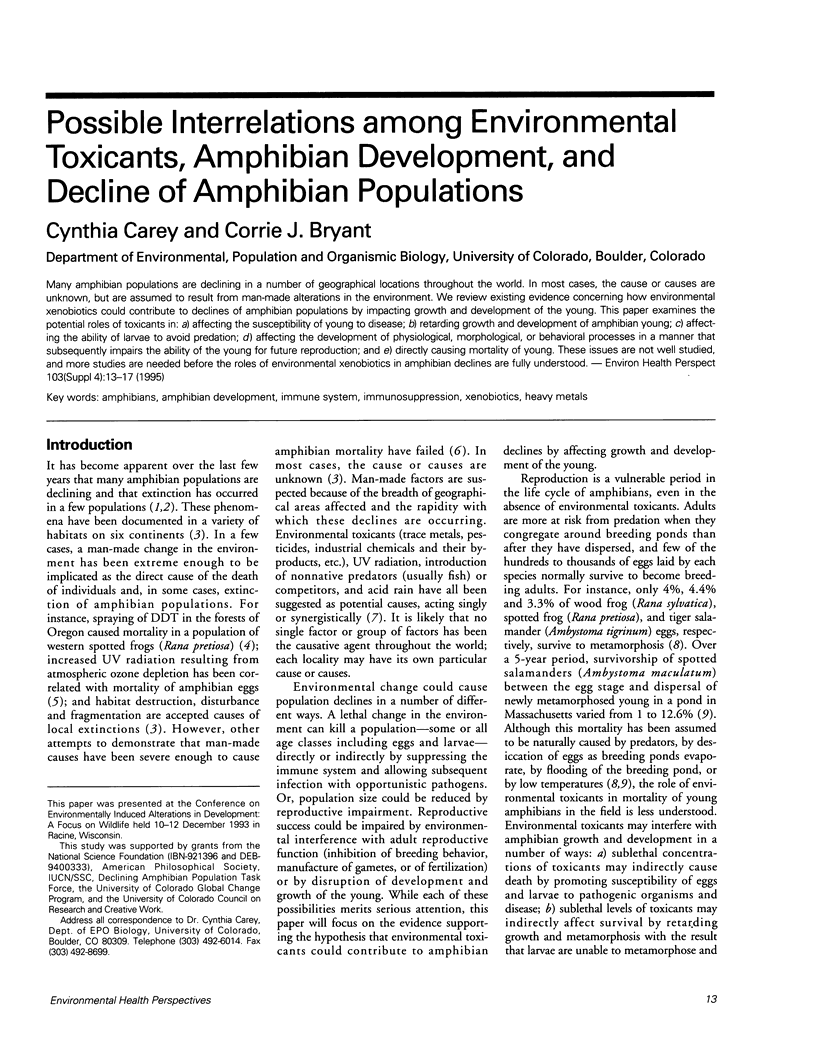
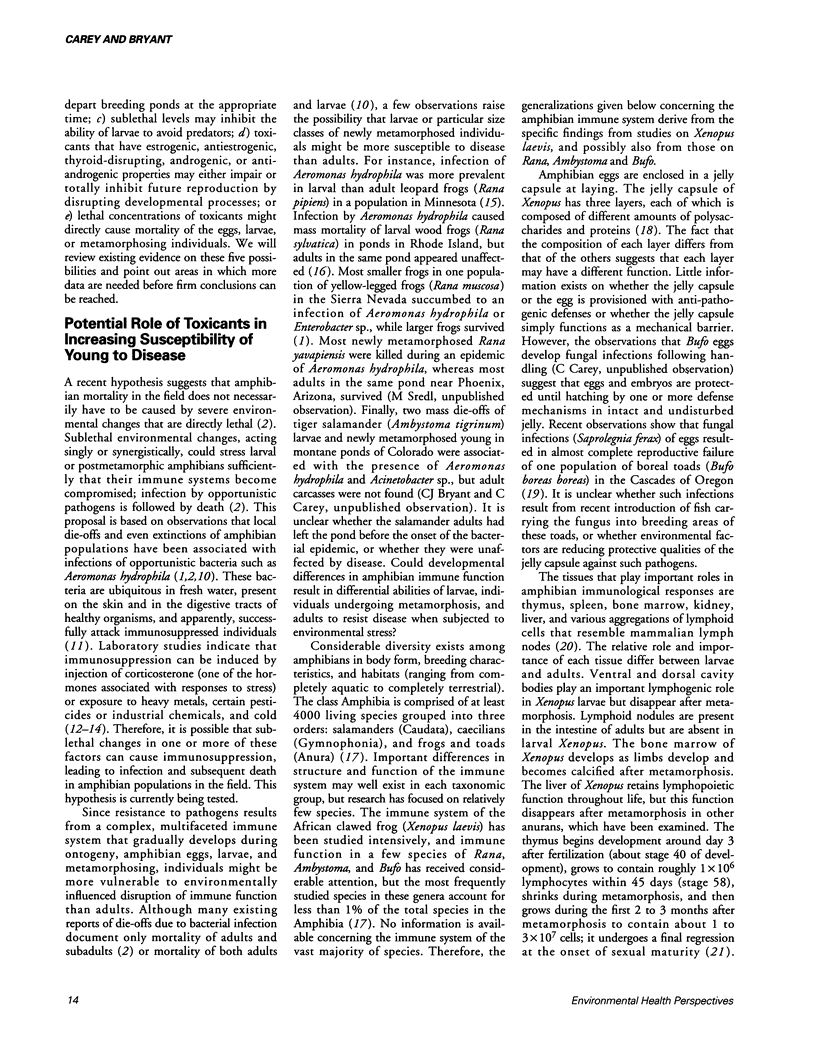
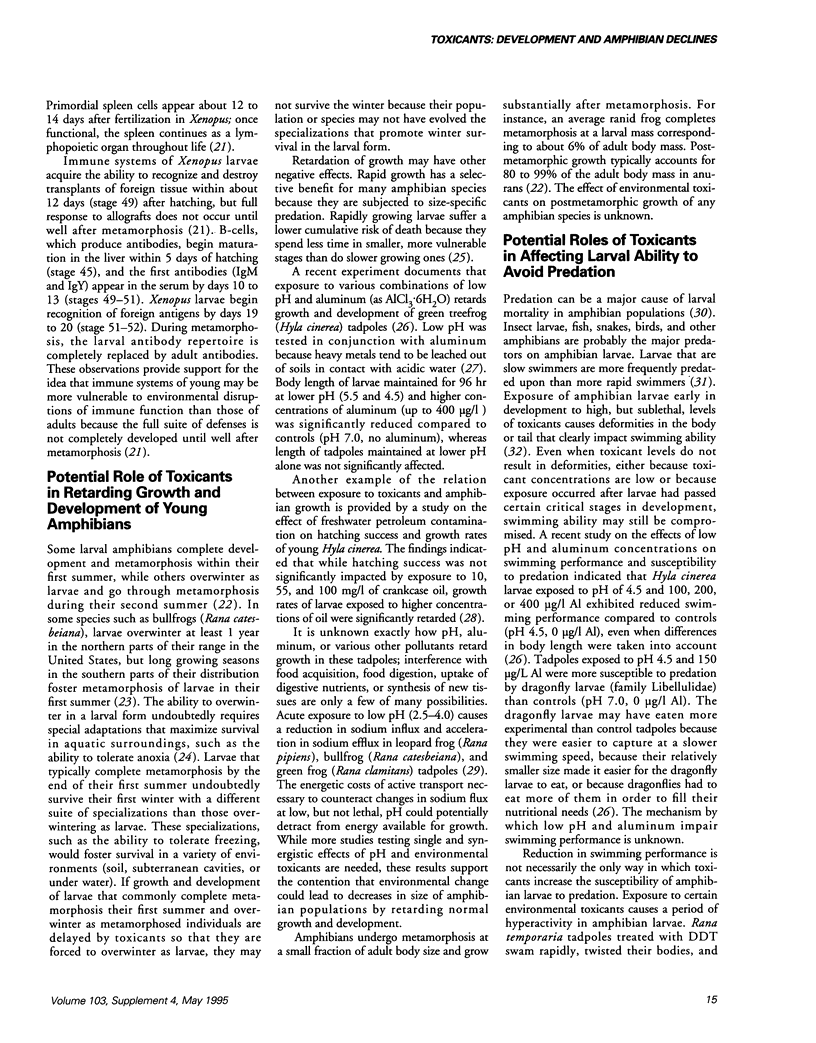
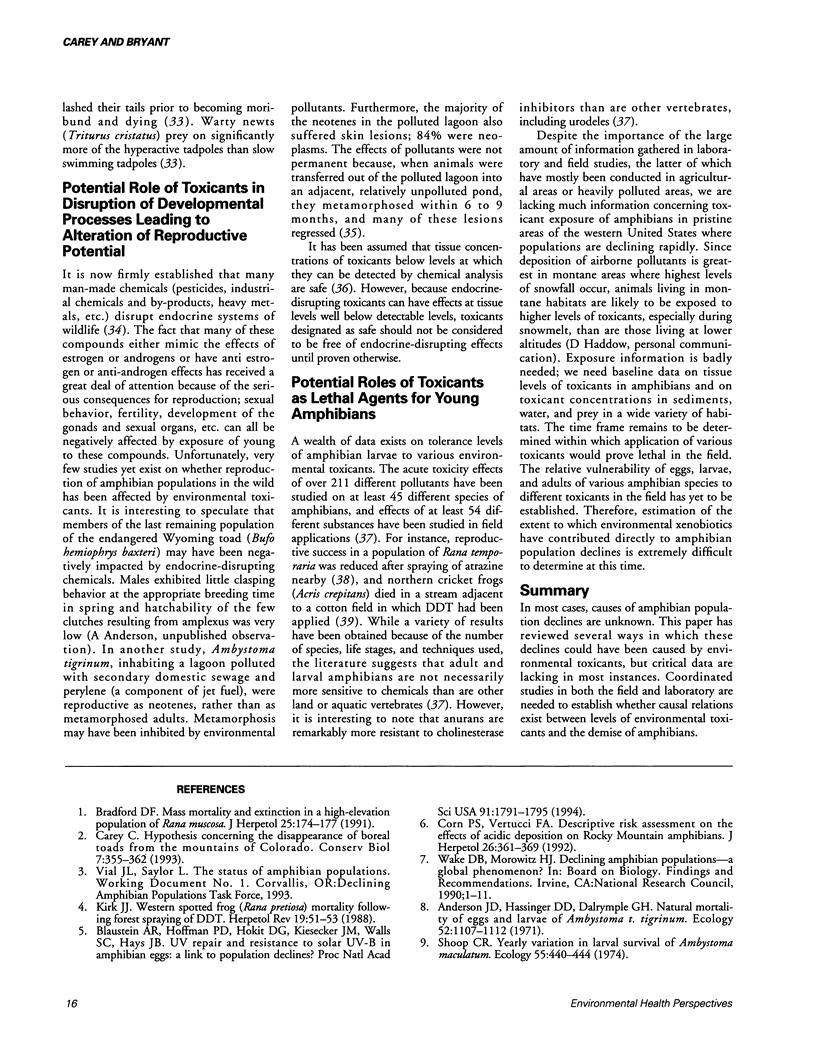
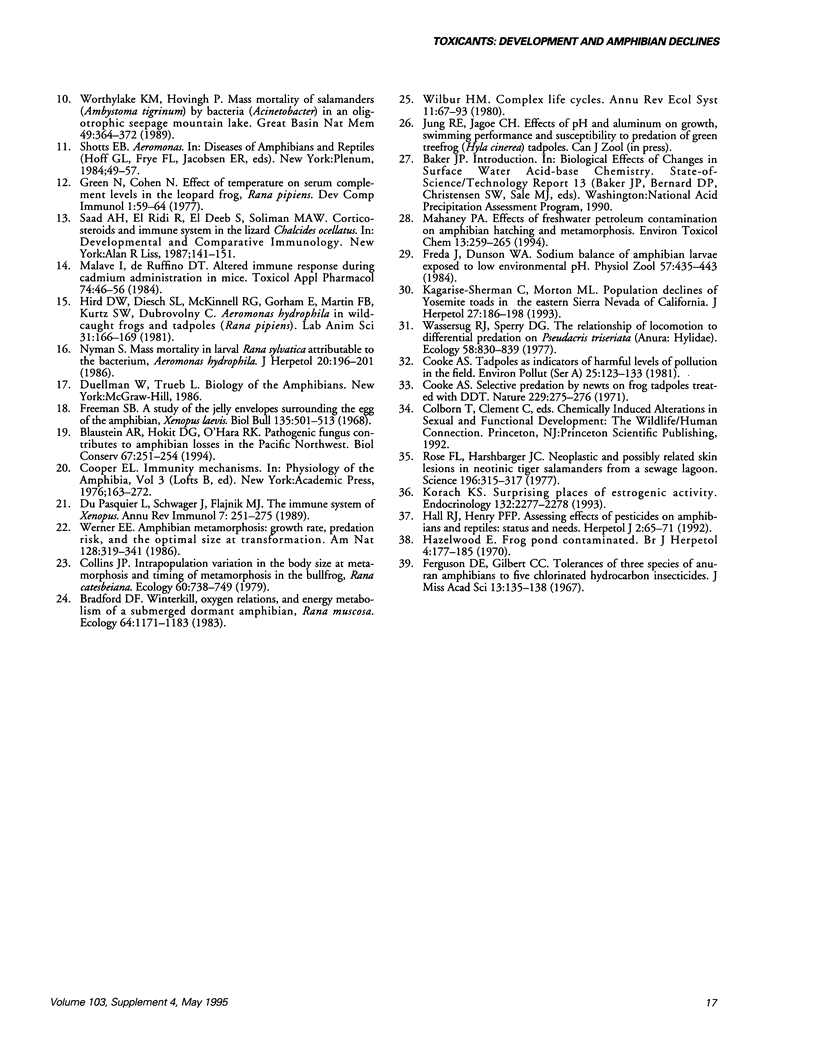
Selected References
These references are in PubMed. This may not be the complete list of references from this article.
- Blaustein A. R., Hoffman P. D., Hokit D. G., Kiesecker J. M., Walls S. C., Hays J. B. UV repair and resistance to solar UV-B in amphibian eggs: a link to population declines? Proc Natl Acad Sci U S A. 1994 Mar 1;91(5):1791–1795. doi: 10.1073/pnas.91.5.1791. [DOI] [PMC free article] [PubMed] [Google Scholar]
- Cooke A. S. Selective predation by newts on frog tadpoles treated with DDT. Nature. 1971 Jan 22;229(5282):275–276. doi: 10.1038/229275a0. [DOI] [PubMed] [Google Scholar]
- Du Pasquier L., Schwager J., Flajnik M. F. The immune system of Xenopus. Annu Rev Immunol. 1989;7:251–275. doi: 10.1146/annurev.iy.07.040189.001343. [DOI] [PubMed] [Google Scholar]
- Green N., Cohen N. Effect of temperature on serum complement levels in the leopard frog, Rana pipiens. Dev Comp Immunol. 1977 Jan;1(1):59–64. doi: 10.1016/s0145-305x(77)80051-7. [DOI] [PubMed] [Google Scholar]
- Hird D. W., Diesch S. L., McKinnell R. G., Gorham E., Martin F. B., Kurtz S. W., Dubrovolny C. Aeromonas hydrophila in wild-caught frogs and tadpoles (Rana pipiens) in Minnesota. Lab Anim Sci. 1981 Apr;31(2):166–169. [PubMed] [Google Scholar]
- Korach K. S. Surprising places of estrogenic activity. Endocrinology. 1993 Jun;132(6):2277–2278. doi: 10.1210/endo.132.6.8504730. [DOI] [PubMed] [Google Scholar]
- Malavé I., de Ruffino D. T. Altered immune response during cadmium administration in mice. Toxicol Appl Pharmacol. 1984 Jun 15;74(1):46–56. doi: 10.1016/0041-008x(84)90268-0. [DOI] [PubMed] [Google Scholar]
- Rose F. L., Harshbarger J. C. Neoplastic and possibly related skin lesions in neotonic tiger salamanders from a sewage lagoon. Science. 1977 Apr 15;196(4287):315–317. doi: 10.1126/science.847473. [DOI] [PubMed] [Google Scholar]
- Saad A. H., el Ridi R., el Deeb S., Soliman M. A. Corticosteroids and immune system in the lizard Chalcides ocellatus. Prog Clin Biol Res. 1987;233:141–151. [PubMed] [Google Scholar]


